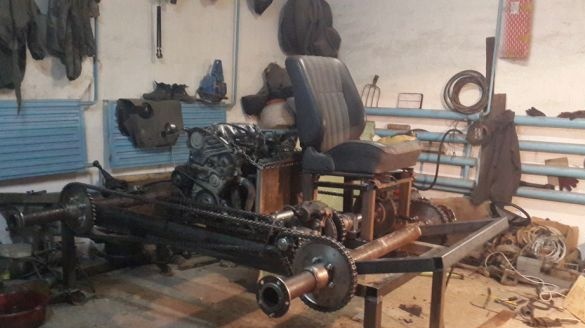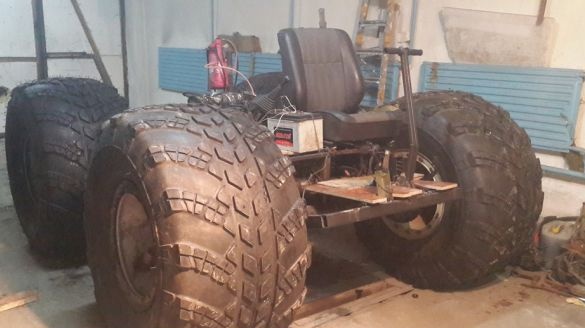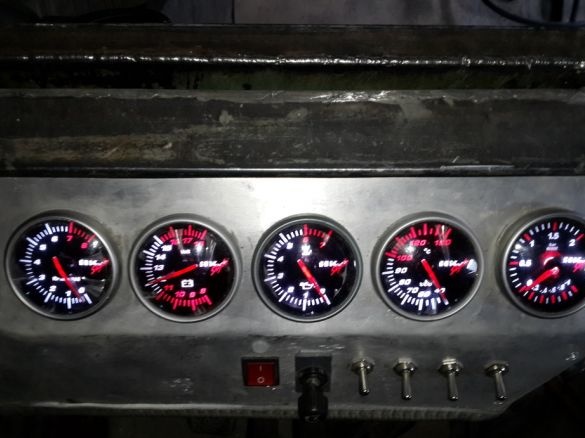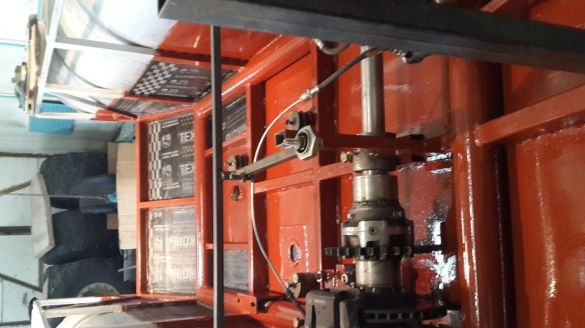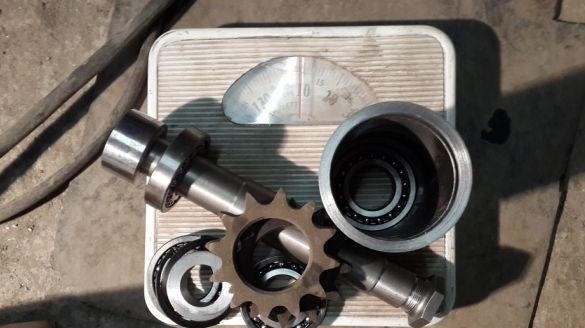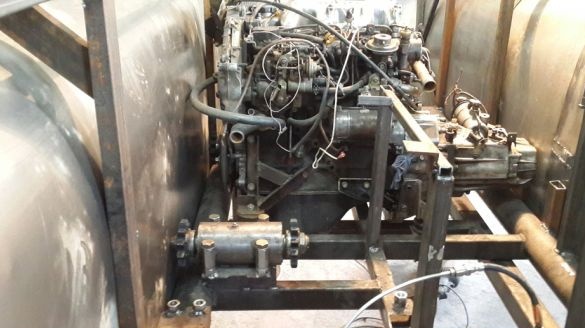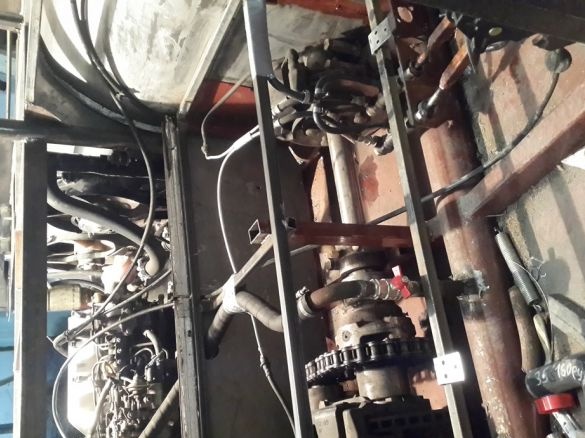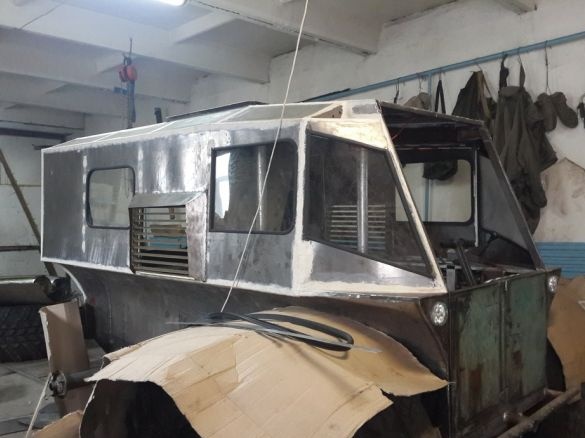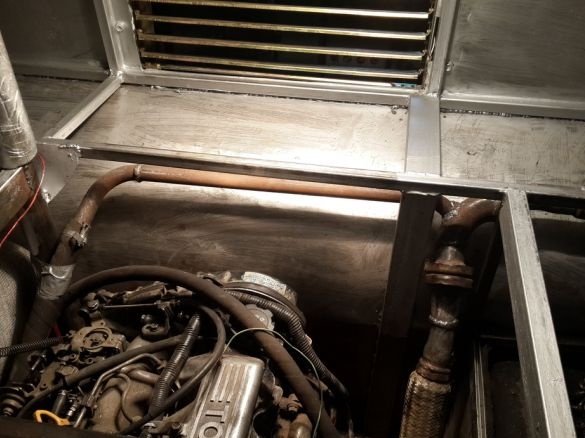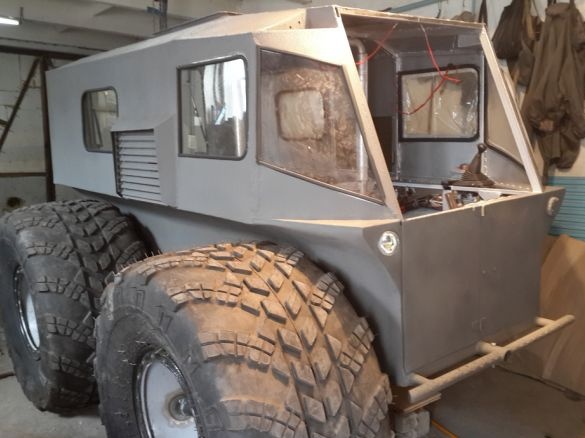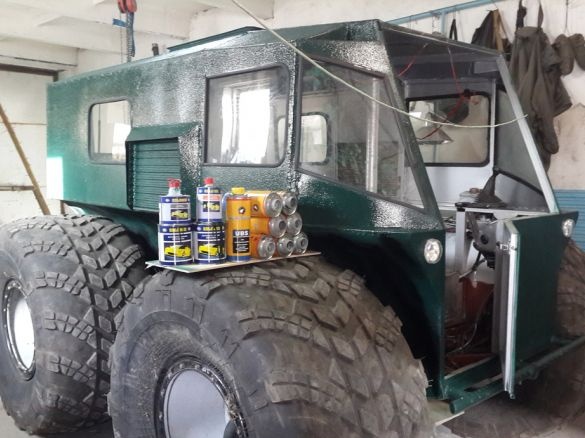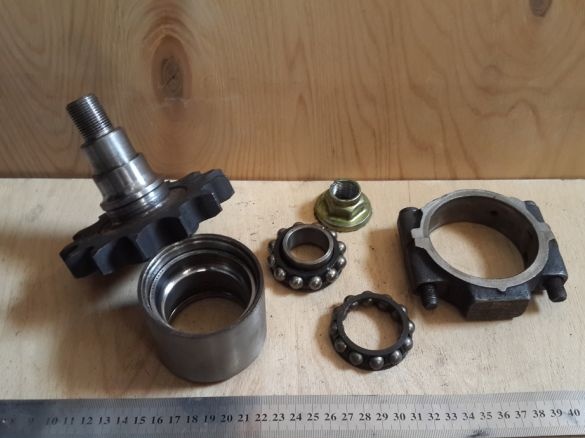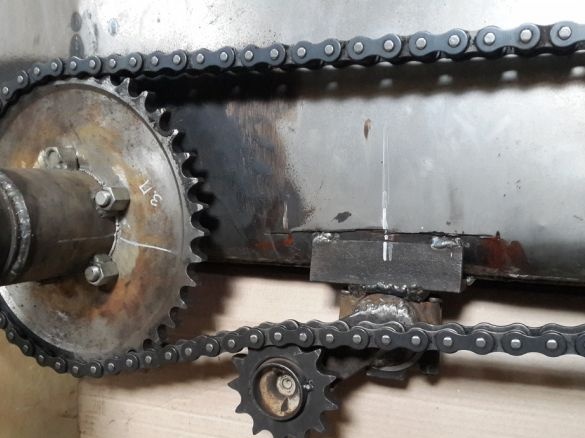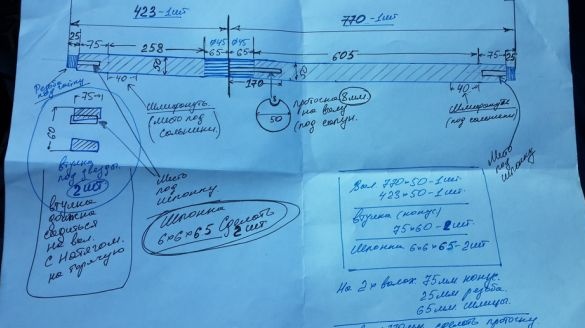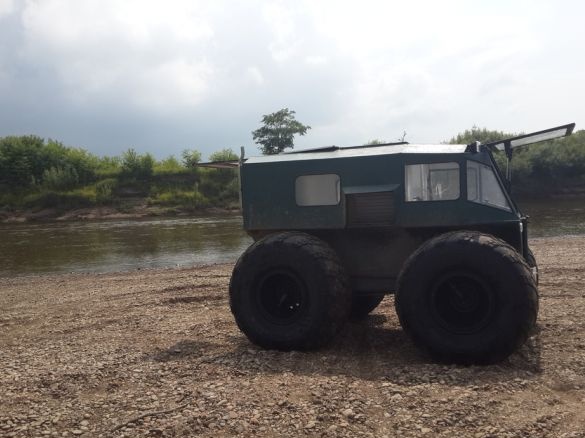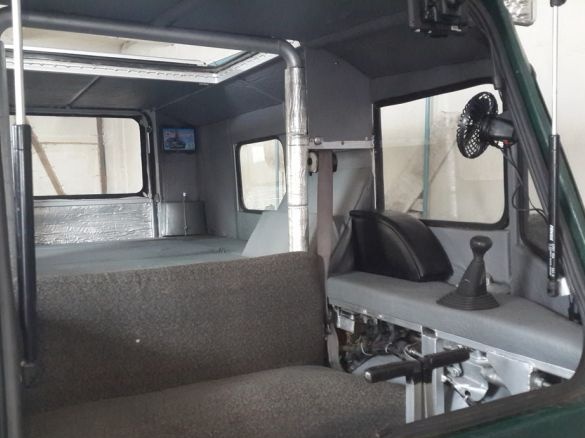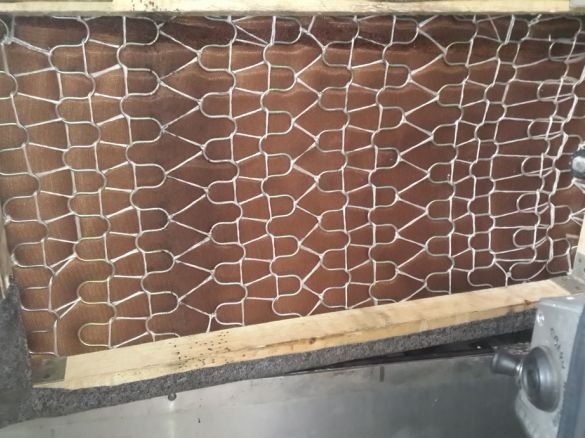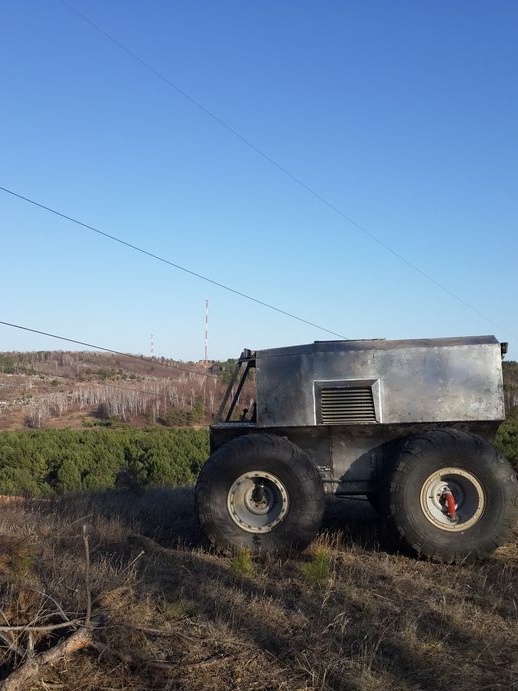
The car got its name in honor of the main guard of the author’s enterprise. The Thunder is called the Caucasian Shepherd, which has been working there for 12 years. The author expects that this all-terrain vehicle will serve him no less.
In February 2014, the author got acquainted with the site of , and he got an obsession with making his all-terrain vehicle.
The body of the all-terrain vehicle will be of a boat type, since the author wants to make an all-terrain vehicle capable of overcoming any obstacles, including rivers, lakes. The all-terrain vehicle is designed for 4, that is, the driver + 3 people. Must have a berth for 3 people. Thus, the author decided to build not only a car, but also a house where you can spend a week fishing.
The materials and assemblies that were used by the author to create this machine:
1) Trekol wheels 1350 x 700,
2) chains of Latvia, stars at Adler
3) Many details were taken from the Toyota Sprint donor machine.
4) In particular, Toyota received a diesel internal combustion engine, Japanese-made 2C.
5) Sheet metal 2 mm thick, as well as 1.5 mm, 1 mm and 0.8 mm were used for car upholstery.
6) For welding the frame, a pipe 89 was used, as well as a profile of 15x15x1.5 mm and 60x40x3 mm.
7) The differential is taken from Kamaz
8) Wheels and calipers were borrowed from Mark.
9) A tank of 100 liters with a central pumping of 45 mm was also used.
Technical characteristics of the all-terrain vehicle:
It is 3 meters long 10 centimeters, two and a half meters wide, 2 meters high 10 centimeters, a base of 180 centimeters, a track of 180 centimeters. The mass of the all-terrain vehicle is about one ton plus minus 200 kilograms.
There is a hatch 900x700.
Light: dipped, far, rear (diode) + tumanki (tube).
Speed: the minimum speed of about 1.5 kilometers, and the maximum under 35 km \ hour.
After getting acquainted with the technical characteristics, it's time to consider the stages of construction of the all-terrain vehicle.
To begin with, the author assembled a frame using a 89 mm diameter pipe, as well as a profile from 15x15x1.5 mm to 60x40x3 mm.
After which I installed the prepared rubber, and received such a chassis:
The front of the all-terrain vehicle was 80-100 kg heavier than the rear. According to the author’s idea, after replacing the test canister, which is used as a fuel tank with a real one with a capacity of 100 liters, equilibrium should be found.
For transmission, stars 12 and 40z were used. The front stars are close, the gap is 8 mm., The rest is a long chain on the rear axles.
Also, the following instrument system was installed in the all-terrain vehicle:
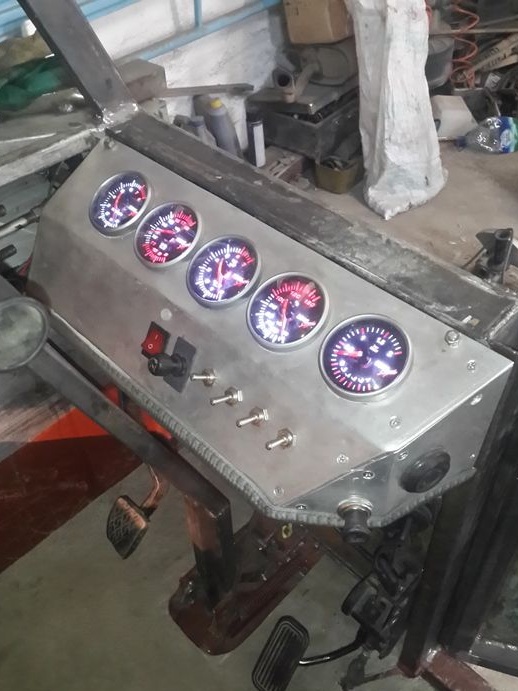
We list them in order:
1) pressure gauge from -4 to 2 bar.
2) pace. cool Jew.
3) oil pressure
4) ammeter
5) Tachometer up to 8000 rpm.
The author reports that there were still devices: oil temperature and the exhaust manifold (purpose remains a mystery)
There were problems with connecting the tachometer, since it is a tachometer for a gasoline engine and it will not work from fuel.
Although the principle of operation of the tachometer is based on the reading of the pulse i.e. there should not be a difference between the operation of the distributor and the firefly. On the back of the device there is a switch to 3 positions to compensate for the difference.
There is a backlight, each device has its own case with a turntable. In the case they look prettier, but on the all-terrain vehicle it’s not relevant, since extra details are extra fuss with breakdowns, and the author does not need it.
The chain from the side of the machine is at a distance of 12-18 mm. Not knocking. When turning at low pressure on the left side of the tire, the body was slightly rubbed. Therefore, the author took off the chain, heated the body with a gas burner and straightened a little under. This fixed friction problems.
Then the author began the installation of the main structural elements:
Here you can see the shaft and differential:
This is what the frame inside the boat hull looks like:
Intermediate Shaft:
Shaft mounted on the frame:
Then he partially sheathed the all-terrain vehicle by making a body boat:
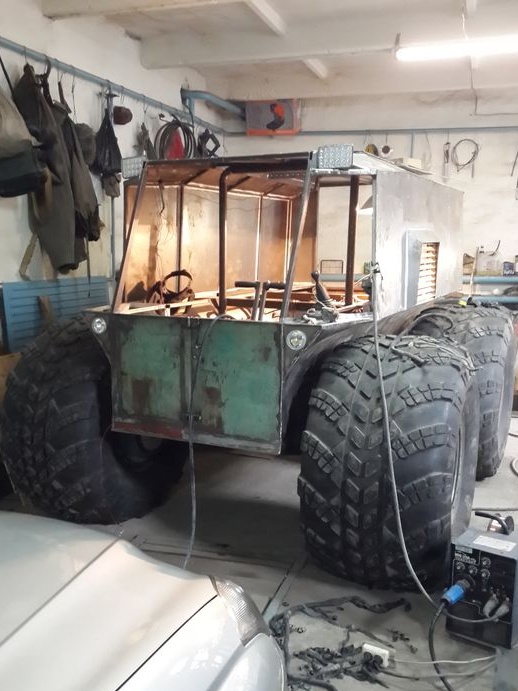
The all-terrain vehicle is prepared for transportation:
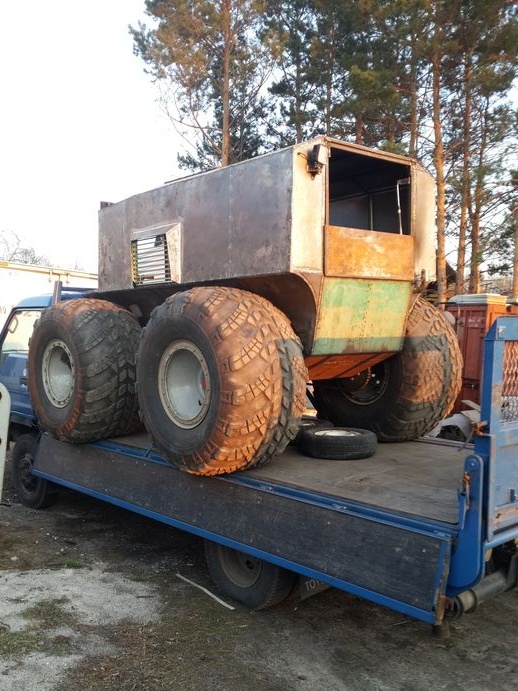
The author considered the possibility to put a torsion bar instead of the spring axes:
Also, the author built a bumper for a quick-detachable winch, and also installed a second duct to purge the engine. For greater tightness of the body, the seams of the body were sealed with sealant. In the future, it is planned to apply Antigravel rubber coating on the body and paint in camouflage color. Side windows were also installed.
The rear wheel is removed, as the author decided to make a long chain tensioners.
Outlet from the exhaust pipe 70 cm, then a rubber sleeve. Rubber dries due to heat.
On a river crossing without a motor, demolition over a 5-7 km course. A temporary transom was made to mount the Suzuki 30 engine.
Then the author applied 2 layers of Antigravil gray.
The car was painted. Antigraved polymer + paint.
Donor: Toyota hub, connecting rod ZIL:
Setting the chain tensioner:
Schemes of parts for a turner made by the author.
Shafts on the differential were made from the axis of the car.
They gave it to the forge, pulled the blank to the right size, and then the turner. Slotted hardened.
The dowels are made 8x8x65 and the groove for the breather is 8x190.
By the way, if someone will use such schemes, then if the size of the engine and gearbox is smaller, then you can do it without an additional shaft, directly throw the chain from the drive to the differential. And this, in turn, means reducing labor costs and time for turning, bearings, iron, and therefore easier to install. There will be no 3rd attachment point. At 3 support points, it is more difficult to catch alignment.
Here you can watch video clips about testing the all-terrain vehicle THRESHOLD.
As a result, the mass of the all-terrain vehicle turned out to be about one ton of three hundred kilograms.
The weight of the all-terrain vehicle without zip and winch is 1250 kg. The all-terrain vehicle is completely ready for use from a mechanical point of view.
Having dealt with the mechanics, the author decided to do the car interior.
The interior was insulated and even sheathed with a leather substitute. Installed 2 batteries of 60A., Converter 12-220 to 2Kw.
Photos of the off-road vehicle:
Vehicle interior:
Seat (polyurethane-metal foam helps the air suspension not to repel the spine and the fifth point)
Made of furniture snake (springs for soft of furniture), on top of foam rubber 12 cm.
The author of the all-terrain vehicle: Vadim V. from the Amur region.

